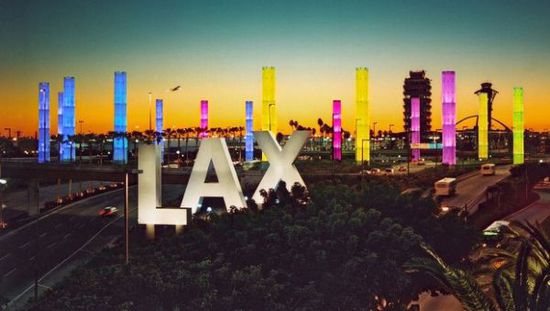The origin of the airport three-word code
- Author:Cynthia
- Source:Sunny worlwide logistics
- Release Date:2018-08-28
Many times we are allAir transportEveryone is accustomed to using three-character code to directly refer to each airport. It is very simple to express our meaning. It is very practical, but everyone knows how the three-word code comes from?
So today, the small series of Hongmingda Logistics will let everyone learn together.
The airport three-character code is an English letter that will be seen in the travel of passengers. Some three-character codes are clear at a glance. You can know which airport you are at first glance, but the meaning of some three-word codes is hard to guess.
The origin of the airport three-word code
What do these three-word codes mean? Let's first take a look at the three-character code of some airports in Australia. The airport codes for Sydney, Melbourne and Perth are "SYD", "MEL" and
"PER", it is not difficult to understand the first three letters of English place names. But not all three-character codes are taken this way. For example, the three-character code at Brisbane Airport is "BNE" instead of "BRI" because "BRI"
It is another airport code for the Italian city of Bari. However, it is said that the three-character code of Barry Airport should be "BAR", but the code "BAR" was assigned to the now abandoned Baker Army Airfield.
Even if some letters in the English place names are ignored, many airport three-character codes still closely match the local names like "BNE", such as Adelaide's code "ADL" and Auckland's code "AKL". , Hong Kong code "HKG". However, the code of some airports is completely confusing.

The origin of the airport three-word code
First of all, the origin of the "X" in the code. Many travelers know that "LAX" is the three-character code of the Los Angeles airport, but everyone wonders where this "X" came from. This is going back to the early days of air transport development. The airport code at the time was named after the local weather station code, so the second word code for the Los Angeles airport was “LA”. Later, with the development of air transportation, the two-character code could not meet the naming requirements, so the airport code developed into a three-word code. The original two-character code is followed by an "X" to a three-character code, and the Portland airport code "PDX" is also the source.
The reason why the three-character code at Dubai Airport is not “DUB” is because the “DUB” is already the code for the Dublin airport in Ireland. So the code at Dubai Airport becomes "DXB", and the "X" in the middle does not make any sense, just to make a three-word code. The same is true for the proposed three-character code for Sydney West Airport, built at Badgery’s Creek, named “SWZ”.
One city, multiple airports
In London, for example, the three-character codes for the three major airports in London start with “L” and the latter two come from the airport itself. The code for Heathrow Airport is "LHR" (London Heathrow), the code for Gatwick Airport is "LGW" (Gatwick), and the code for London City Airport is "LCY" (London City).
However, the three-letter code at other airports in London does not have such a correlation with London place names. For example, the three-character code of London Stansted Airport does not start with “L” but “STN”. The airport mainly takes off and flights on low-cost flights.
Three-word code that appears to be unrelated to the location
The three-character code in Beijing is “PEK”, which seems to have nothing to do with “Beijing”. But in fact, PEK is the first three letters of the English name "Peking" of the old "Beijing". After the founding of New China, “Peking” became “Beijing”. The English writing in Beijing has changed, but the three-character code of the airport has not changed.
Another example is the three-character code "ORD" at O’Hare International Airport in Chicago. This is because the airport runway was adjacent to a small farming community called “Orchard Place”, so the airport was originally called “Orchard Field Airport”, so the three-character code became “ORD”.
Have to mention Canada
The origin of the airport three-word code
Canada is very different. Regardless of the city's place name, the three-character code of all domestic airports will start with "Y". This has to start from the early days of the aviation industry, but this time it has nothing to do with the weather station, but a radio station. When radio broadcasting was just emerging, North America was divided into three blocks according to the geographical area, and each station's call sign was preceded by a specific letter of its own area. At that time, the area east of the Mississippi River in the United States was "W", the west was "K", and Canada was "Y".
This explains why the three-character code for Vancouver Airport is “YVR”, the three-character code for Ottawa Airport is “YOW”, and the three-character code for Toronto Pearson International Airport is “YYZ”. There is a question here. Should the three-word code at Toronto Airport be "YTO"? The answer is similar to what was said before. "YTO" was used as a general area code for the city of Toronto at the time, so it could not be used as an airport three-character code. The "YYZ" was the call sign of a radio station in a small village called Malton at the time of Toronto Pearson International Airport. Later, the call sign was deactivated.
Everyone knows this. When I see the airport three-character code on the suitcase next time, I know that these three letters are not randomly selected. Sometimes there are stories behind them that I don't know.
